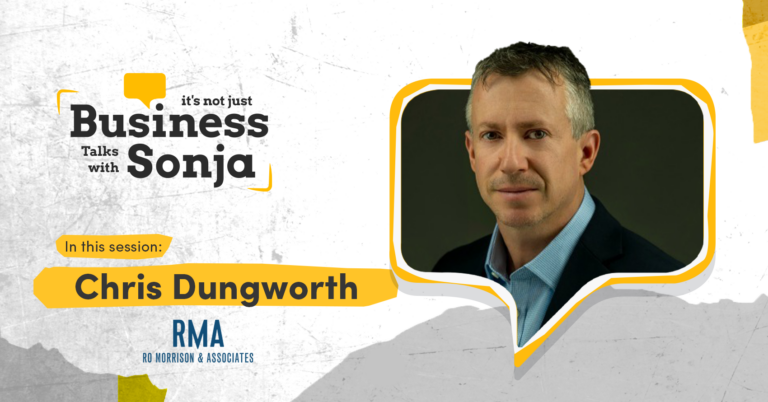When discerning your business’s true marketing return on investment (MROI), you may want to include a number of measurables that will help you justify the marketing money spent. Some of these measurables are certainly important elements of a marketing campaign; things like brand awareness, contacts, website traffic, social media interactions or email sign-ups. They do not factor into calculating marketing ROI unless they result in sales/income for the business.
Flipping houses has become a popular DIY job for a lot of Americans who like buying rundown homes, fixing them up and then reselling them for a profit. These entrepreneurs are very focused on their ROI because they can’t afford to lose money on an investment property. A simple example of how to calculate ROI for a project in this industry might look like this:
Buy a fixer-upper house: $120,000
Fix it up: $50,000 (supplies, construction, loan payments)
Costs to sell the house: $7,500 (commission, loan payments)
Total cost: $177,500
It is not difficult to see what the new sale price on this house will need to be in order to glean a positive ROI. Given the time and sweat equity poured into a project like this, it will be important to sell this house for at least $200,000. At that sales price the ROI will be $22,500 or 12.7%. Of course, selling it for more would result in a higher ROI.
Although this simple example of ROI has very fixed and easy to determine costs and sales numbers, it provides a clear path for understanding when the question pops up, “how do you calculate ROI in marketing?” In any business venture, the actual costs of marketing can be hard to estimate accurately ahead of time. But by doing the research to determine probable costs, leads to conversion rates, conversions needed, average return on sales, etc., your business can go a long way to ensuring that your marketing dollars yield a positive ROI every time (or almost every time).
A Formula for: How To Calculate ROI for Marketing Campaigns
[((number of leads x lead-to-customer rate x average sales price) – cost or ad spend) ÷ cost or ad spend] x 100.
In order for this formula to be useful for your business when it is calculating marketing ROI, let’s identify several important marketing terms frequently used in data collection:
- Number of Impressions: How many people laid eyes on your ad? If they see it, your ad can leave an impression, even if they don’t do anything.
- Number of Responses: How many people clicked on your ad and went to your landing page, visited your website, gave their email address, etc.?
- Number of Leads: How many of those responses converted to leads?
- Lead-to-customer (conversion) rate: What percentage of leads convert to customers? When 15 out of 100 leads become customers, your lead to customer rate is 15%.
- Average sales price: What is the average price of your product? Averaging is helpful, especially when there are discounts available or prices vary for other reasons. If you work with clients it is important to determine the average contract amount.
- Number of Sales: How many sales at your average price point were made from the ad?
- Marketing costs: How much was spent to create and promote your marketing campaign? Factor in all your costs including ad spend, hourly wages and number of hours for people working on the project, and/or costs to produce ads.
Measurables That Don’t Impact ROI
It will be tempting to consider other non-financial elements of your marketing strategy when determining a campaign’s overall success. But attempting to determine the benefits of new followers or likes on social media, increased traffic on your website or intangibles like greater brand awareness and trust with your customers, is not a measurement of ROI.
These elements may indeed produce long term boosts in sales, customer relationships and overall brand growth, which are of course important. However, because these factors do not impact your monetary return on investment, they are not included in ROI.
Using the above formula for Marketing ROI, let’s look at examples of ways your business can learn to calculate how much money should be allocated to marketing budgets for specific campaigns ahead of time in order to produce the MROI you desire.
Examples: How to Calculate ROI for a Project in a Marketing Campaign
Blogs and Newsletters
You might be surprised to know that about 80% of marketers who consistently blog recognize a positive ROI through this inbound marketing strategy.
But, writing content for blogs and newsletters still costs your business time and money. For those who include them in their marketing strategy, it is important to calculate all time-related costs, production costs and promotional costs as part of your total budget. Time related costs involve the number of employee or contractor hours needed for the project, times their hourly wage(s).
An example of this is a contracted copywriter who gets paid $50 an hour and takes two hours to write a new blog post. The total time-related cost will be $100 in labor and any costs for promotion must also be added.
By linking your blog to a landing page, you can use this page to identify how many visitors to that page have come directly from your blog. When you track these visits, leads and customer conversions through a blog post or newsletter article, it is easy to measure the effectiveness and efficiency of your strategy. If the created content also generates ROI because the blog post is about a new product and is linked to a landing page where people can purchase the product, then you can calculate MROI based on sales from that landing page. If MROI is low then you can determine whether writing is poor, creation time is too long or something else might produce better results, and adjust your marketing strategy accordingly.
Example:
A non-profit focusing on supplying safe water to rural Third World nations wants more donors. They produce four blog posts about the specific ways they are meeting the water needs in four different countries where they have projects. Each blog includes a linked landing page that invites readers to donate to their organization and help them expand their efforts.
It cost them $600 to have an employee write the blog posts using SEO keywords, $100 to edit them and make them SEO and user friendly and another $100 to promote them. Four weeks after the last blog post they had received 250 inquiries and 100 donations through their link. This included 70 new donors, 30 of which made pledges for monthly donations. The average donation was $100 per donor.
Here’s how to calculate marketing ROI for a project like this, using our formula:
[((250 x 0.4 x $100) – $800) ÷ $800] x 100 = 1,150%
That kind of rate of return would be fantastic for a non-profit or for any business, and they would likely want to continue with their strategy. If they like the strategy but want to test other ways to increase ROI, they could use video footage from previous in-country projects to create a video post on their website and/or social media and compare their overall MROI.
Video Marketing
Incredibly, more that 80% of marketers report that video has produced strong ROI for them. No matter what type of content marketing you choose, there will be a time and money cost for producing these videos. Capital investments to buy or rent film equipment, and/or editing software, may be necessary and must be factored into your MROI.
Costs will include: writing a script, storyboarding, paying for a film crew, equipment, lighting, sound, editing, actors and/or narrator and promotion.
With so much going into production it will be very important to measure your video’s effectiveness. If you upload your video into social media platforms, be sure to include in the post caption an action item that leads interested viewers to a unique business or a specific product’s landing page. This will allow you to track exactly how many visitors were drawn to the page by your video post.
Example
The same non-profit from the first example decided to try another marketing method as a comparison. They had plenty of digital footage from projects they contracted recently in three different countries. They decided to make three 8-minute videos showing the situations of the people in these three villages before, during and after their projects. They then posted these videos on their social media accounts with links to landing pages just like they did with their blogs.
Their costs were, $1000 to buy video editing software and $500 to write the scripts, $500 for a narrator voice over and another $1000 in labor to produce the videos from the digital footage and add a few graphic visuals to reveal statistics for the three countries and to break down for the viewers how and where their donations get spent. Over the course of a few months in circulation, these videos got 8,000 views, resulting in 4,000 inquiries to the landing pages, 800 donations (500 of them new donors) and an average donation of $75.
Let’s use the formula to determine how to calculate marketing ROI:
[((4,000 x 0.2 x $75) – $3,000) ÷ $3,000] x 100 =1900%
Since they already had the footage from recent projects, their costs were very low and their MROI was very high. They will likely want to repeat this effort but will also need to figure in the costs associated with sending people on a trip to the project country, costs for the video recording equipment and other labor costs. Depending on the results, they will likely want to repeat the process for each country they do projects in.
Pay Per Click (PPC) Campaigns
Pay-per-click works a lot like it sounds. You pay a fee every time someone clicks on your ad. Even when clicks to the ad don’t lead to sales, you get charged. For this reason is it important to monitor your ROI on any and all PPC campaigns after you launch them. Google tells its advertisers how great their ROI is, but when PPC campaigns go unmonitored or get mismanaged they can end up wasting a lot of money for little return.
Fortunately, there are tools available for small business owners to help with PPC campaign management. These will also cost you some advertising dollars, but will likely help to keep the campaign on track and your ROI strong. Here’s an example of how this works using the ROI formula to track your ad’s performance.
Example:
An online Heating & Cooling store uses a PPC ad to raise awareness of a new line of ductless air conditioners that are room-sized and cost $2,000 apiece.
They ran two campaigns to test the results and, in their first campaign they did not reveal the price, while in their second campaign they did reveal the price. Their total ad spend for the first ad was $1,300 and they received 250 clicks, of which 7 of them put the item in their cart and two purchased. During the second campaign, which included the price, they spent a total of $1,200. They attracted 230 web visitors, 14 put the air conditioning unit in their cart and six bought it.
The heating & cooling business used the formula to compare how the different PPC ad scripts changed ROI:
First Campaign: [((7 x .286 x $2,000) – $1,300) ÷ $1,300] x 100 = 208% ROI
Second Campaign: [((14 x .429 x $2,000) – $1,200) ÷ $1,200] x 100 = 901% ROI
Using these comparable PPC campaign results, the business concluded that price transparency is more effective at attracting qualified leads to click on their ad. Part of this could be because price transparency weeds out the simply curious, which in turn lowers the cost of paying for clicks by people who can’t afford the air conditioning unit.
Email Marketing
With all of the new fancy methods of advertising it can be easy to think that email marketing is no longer effective. But email is still very effective for a lot of businesses, especially those who have a long mailing list of present, potential and previous customers. Targeting a specific and well crafted ad to people who are already somewhat familiar with your business and products can yield excellent results and a high ROI.
It is really important to use landing pages with your ads so that you can track the results of people who clicked on the ad, people who went to the landing page, added to their shopping cart and actually purchased. Ideally also a way to track those who bought in store as a result of the ad, like a coupon (printed or shown on their phone), is a great way to track in-store purchases.
This is one way to show how a business might measure their ROI with email marketing.
Example
A local hair salon provides a weekly e-newsletter for customers and people who sign up on their website. A hair products company pays them $400 to place an ad with a link to a page where they can purchase their latest amazing $25 hair product.
The ad also allows the hair products company to track the ads effectiveness. They learn that the email ad sent 95 visitors to their product page and 40 placed the new hair product in their cart while 32 purchased it.
The ROI formula would look like this:
[((40 x .80 x $25) – $400) ÷ $400] x 100 = 100% ROI through the URL
This was not a great return, however they also tracked the sales of the product at the hair salon where they had offered a $4 (20% off) coupon that also had a tracking URL. Over a two month period (the life of the coupon), the salon sold 150 bottles of the product at the discounted price of $21. The cost was just the discount amount (150 X $4 = $600).
[((150 x $21) – $600) ÷ $600] x 100 = 425% ROI at the hair salon
The combined ROI from their ad in the newsletter netted the hair products company a handsome 525% ROI from this one hair salon. Based on this information, it is likely that they will continue to place email ads in that newsletter and find other salons with extensive email lists to expand their sales even more. Continuing to track the ROI of each campaign will help them determine a good frequency and help them see if people tire of the ads or continue to purchase their products.
Targeted Social Media Promotion
When a company already has a following that regularly uses social media, like Facebook, Twitter, or Instagram, that company has a great opportunity. They can boost one or more of their posts and get it promoted on the news feeds of carefully targeted audiences.
Most social promotions give you the opportunity to set a goal, an audience target, a time frame, and a budget. When you track your ROI you will be able to easily determine if your social boost strategy is successful or not and you can identify the kinds of posts that produce the best return.
Example:
An outdoorsy publication wants to build their web subscriptions; they cost $11 a month. The publisher decides to offer a one-month free trial in order to create new leads. Their staff creates a Twitter “tweet” with the free trial offer. Included in the tweet is a call to action that takes them to the free-trial landing page.
Twitter boosted their posts for five days with a budget of $30 per day. During the five days of the posted boost, the publisher received 130 visitors and 28 signed up for a free trial. Of the 28, six subscribed to the magazine and climbed mountains, kayaked rivers and ate bugs for a year.
Let’s take a look at how to calculate marketing ROI with our formula again:
[((6 x $132) – (130 x .215 x $11) – $150) ÷ $150] x 100 = 223%
Because the publication lost $60 and still has to honor the free subscriptions they gave out, they might decide to avoid boosting posts on this platform. If they haven’t given up on a boosting strategy just yet, they might try paid promotion on another social platform next time.
Professionally Produced Content
There are plenty of times when your business cannot be bothered with the time commitment and costs of producing your own branded media. It is at these times when businesses turn to marketing professionals to produce their content for them. Marketing agencies will certainly cost you money. But allowing marketing experts to create and produce your content will keep your team focused on what your business does best. Which offsets those costs substantially.
Using the ROI formula you will be able to track what you spend for your professionally produced content and see what kind of return on investment it produces. If you have done your own production in the past you can also see how the MROI of a professional campaign compares to the MROI of your in-house campaigns.
Example:
A Craft Brewery wants to promote their new beer to young adult males, but they don’t really know how to best reach this group of people. They contact a local full-service marketing agency to present their idea and get a strategy as well as a rough budget and timeline.
The agency recommends a series of targeted creative ads, using a theme focused on young men of drinking age, with a prominent logo presentation and brief, fun, quirky storylines to introduce the beers to this demographic on social media. Since the brewery only distributes in a two-state area the agency recommends focusing their social media campaign in specific cities and towns with large populations of young people (college towns, big cities and towns with lots of outdoor activities). They give a three month timeline, with measurable results, for six months and an overall cost of $75,000.
Since their products are new and they must be sold in stores, restaurants, bars and pubs, the ROI must be determined based on overall sales, minus what expected sales for a newly released beer would be without additional advertising. The average sales for their previous four beer releases over a six month period was $250,000 but was $300,000 for their two hoppier beers (closer to the profile of the new beers).
Sales for the first six months for the three beers were: $400,000, $460,000 and $540,000 for a total of $1.4 million.
They used this formula to calculate their ROI:
[((1,400,000 – 900,000) – 75,000) ÷ 75,000] x 100 = 567%
Besides their boost in sales, the brewery also realized they had gained substantial social media traction. With that kind of ROI and the ongoing social media traction, they are likely to continue using this marketing agency and focusing their time and efforts on brewing delicious beer.
Conclusion
Now you have learned how to calculate ROI for marketing campaigns and have a definitive concept and a working equation for ROI when looking to market your business. The reason for using the formula for MROI calculations is to measure the ROI for your business after factoring in the costs of marketing your products and/or services. The goal is to get to the point where, for every marketing campaign, you have a consistent and realistic measure of return before you start your marketing efforts. In other words, you approach your marketing department, or a marketing agency, with your financial target clearly defined. When you get to this point, each of your marketing campaigns will begin with clear statements of your business’s desired financial target(s). Beginning with, “what is your desired ROI?”
The formula helps your business determine your desired marketing ROI before beginning your marketing campaign. You can also use those numbers to create a realistic financial earnings target and, from that, also create a budget for your marketing campaign that is a percentage of the earnings based on your anticipated ROI.
For more information on these ideas zö agency will happily strategize and work with you on building a marketing campaign that is based on your expected ROI. Contact us on how we can help you with this or any marketing questions at zö.agency!


























